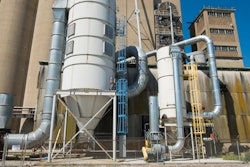
With 2022 planting well underway, it's helpful to look at last year's grain production and supply. This infographic, first published in the February/March issue of Feed & Grain magazine, goes over some of the facts about the 2020/2021 grain marketing year.
Grain exports hit an all-time high in the 2020-2021 marketing year and exports of grains in all forms grew 28.3% compared to 2019-2020 — an anomaly grain marketing year when it comes to exports. Exports suffered that year due to a great deal of uncertainty in the grain markets over the trade war with China, the world's largest grain importer, and the beginning of Covid-19 lockdowns.
But by the end of 2020, exports were back on track and the United States sold over 5.2 billion bushels of grain to customers across the globe, according to the U.S. Grains Council Export Breakdown.
The foreign demand for U.S. grains was met with an increase in production for U.S. producers. According to data from the USDA National Agricultural Statistics Service's (NASS) Annual Crop Production Report, corn, soybeans and sorghum all had a record year with wheat production slightly lowering.
Those increased production numbers weren't a surprise, as producers planted millions more acres of corn, soybeans and sorghum, according to that same USDA NASS crop report. Demand for these grains has gone up worldwide as more people enter the middle class and expect meat to become a nutritional staple. Each of the grains that rose in production between 2020 and 2021 are used in animal feed.
China once again buying grain from the United States after a year of uncertainty was one of the most significant factors in the sharp rise of exports between the 2019/2020 and 2020/2021 marketing years. After African Swine Fever decimated the nation's hog industry, China needed to import more grain to rebuild the country’s swine herds.
Whether it be with precision agriculture, crop genetics or new farming practices produces continue to push the limit of how much can be produced per acre.
.jpg?auto=format%2Ccompress&crop=faces&fit=crop&h=48&q=70&w=48)















